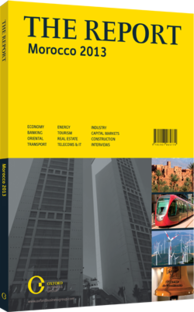OBG talks to Yann Caillère, President & COO, Accor Group

Interview: Yann Caillère
What can be done to help improve the supply of seasoned talent in the hospitality industry?
YANN CAILLÈRE: In recent years, Morocco has progressed to develop more qualified labour for the hotel and tourism sector. New schools have been opened, such as the Hotel School of Geneva in Casablanca in 2010, the Vatel School in Marrakech, the Glion Institute of Higher Education (supported by the Université Internationale de Casablanca) and business schools offering master’s degrees in hotel and tourism management. Apprenticeship programmes have also been developed with professionals in the sector. However, there are specialised areas in which it is still difficult to hire competent staff locally, in particular for the luxury and upscale segment, and in food and beverage services such as executive chefs or sommeliers. Also, new skills have to be developed in the areas of the hotel revenue management and distribution. To improve the situation, the different stakeholders have to work together to define a coherent roadmap in line with the sector’s key objectives. The Ministry of Tourism, public bodies (such as the Office of Vocational Training and Employment Promotion), universities, schools, training centres and, very importantly, the professionals of the tourism sector have to be committed to implement this roadmap.
What are the challenges to achieving the objectives of the Vision 2020 tourism development plan?
CAILLÈRE: To further develop the offer in beach stations in Morocco, the success of the new destinations that are part of the Plan Azur (Saïdia, Port Lixus, Mogador, Mazagan, La Plage Blanche and Taghazout) has to be demonstrated. These stations require more investment to compete on a global level. Success is linked to accessibility through airline connections as well as more international visibility through marketing, communications and promotion. Also, rather than creating many new stations simultaneously that are not functioning well because they are not fully finished, it would be better to launch each resort sequentially before creating a new one. Coordination between public and private sector stakeholders is central to achieving the Vision 2020. Together, they must contribute through the Agency for Tourism Development, so that each region can develop on the basis of its key attributes.
How do you view the potential of Morocco as a meetings, incentives, conferences and exhibitions (MICE) destination in the coming years?
CAILLÈRE: Demand for business travel facilities has remained strong. Until October 2012, demand was up 9% in Casablanca and 5% in Tangier compared with the same period in 2011. Among Morocco’s advantages are that it is less than four hours away from all main European cities; it has strong cultural and gastronomy assets; with Marrakech, it already has a leading MICE destination within its borders; there are local travel agents already specialised in this segment; the French language helps to attract potential from Francophone markets; and it has some good international airports.
Nonetheless, some aspects can be improved. For instance, conference capacities could focus more on Rabat, Casablanca and Tangier. Also, bed capacity needs to be augmented with a segmented approach in order to maximise demand. Finally, more connections are needed between key European cities and the major Moroccan airports, and on a more frequent basis.
In terms of infrastructure, what do you see as the greatest hindrance to further growth?
CAILLÈRE: Insufficient airport infrastructure and airline traffic development could be a limitation for some of the new Moroccan destinations, for example Mogador-Essaouira or Saïdia-Oujda. As of today, Marrakech Menara Airport has higher capacity, and Casablanca Mohammed V Airport is under progress.
Both airports can meet future traffic growth. However, this is not the case for other destinations yet. Leisure infrastructure also needs improving to meet the expectations of the domestic market, a key driver for growth.
You have reached the limit of premium articles you can view for free.
Choose from the options below to purchase print or digital editions of our Reports. You can also purchase a website subscription giving you unlimited access to all of our Reports online for 12 months.
If you have already purchased this Report or have a website subscription, please login to continue.

